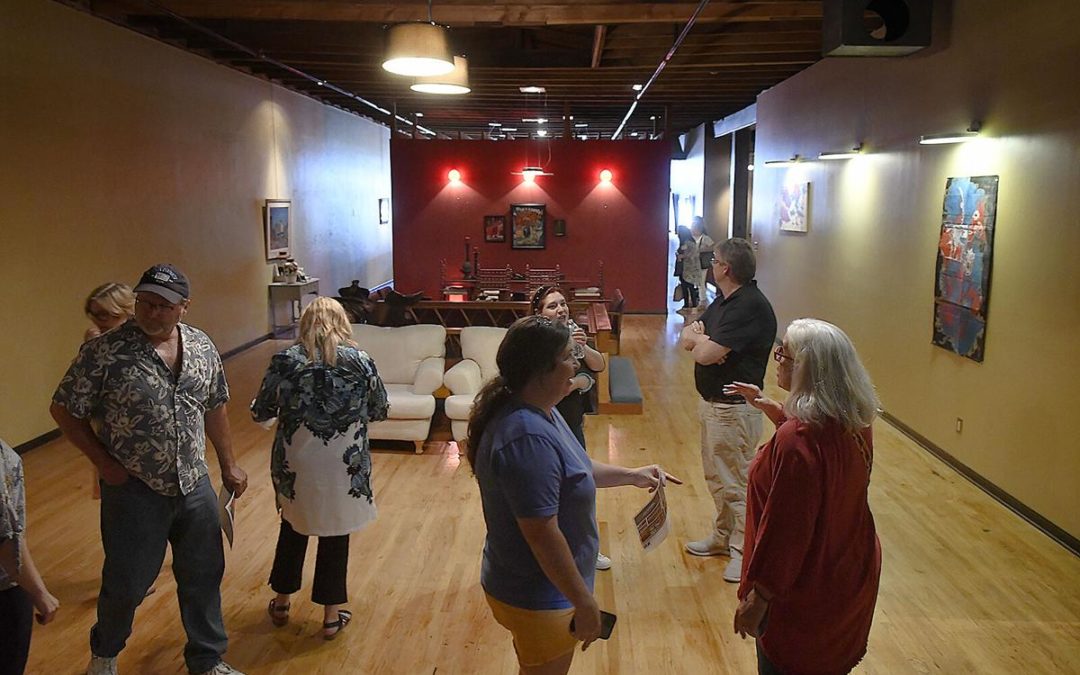Enid has a lofty goal as it further pushes its downtown to new heights.
Forty-two people from across Oklahoma learned the essential steps of upper-floor downtown living during Main Street’s two-day workshop at Stride Bank Center.
Those both from and visiting Enid sat through several hours of scheduled sessions Tuesday and Wednesday, hearing experts on areas such as property management, construction and renovation, city and fire code, historical tax credits and economic development in downtown.
Those renovating an urban apartment would see a return on investment in at least five years, with a construction loan lasting around two years, Oklahoma architect Josh Kunkel said during Wednesday’s pro forma case study on downtown Enid.
Further tax credits are available in historical downtown areas, however, through the National Park Service’s Federal Historic Preservation Tax Incentives Program, Kunkel said.
Main Street Enid Executive Director Natalie Beurlot said she hopes the workshop inspires business owners, developers and other cities’ Main Street members to consider the perks of loft-living.
Beurlot, who helped organize the workshop with Oklahoma’s Main Street Center, said being able to break up the large subject of upper-floor living helped people understand the impact that living upstairs can have on a downtown.
“By bringing more people downtown, it creates a nightlife,” she said. “There’s going to be a consistent foot traffic into businesses, generating more sales tax (for the city) and revenue for our small businesses.”
Beurlot said she knows of five buildings downtown that currently have habitable upper floors — some are lived-in, while others have been turned into AirBnB nightly rentals.
Enid business owner Mike Klemme said with downtown Enid as a double-square district — one of the largest in the nation — the city already has one, more horizontal complication: Geographically filling its area to “critical mass,” when he said downtown gets “to where it’s humming.”
Attendees visited two downtown buildings Wednesday morning, as a “before and after” demonstration of renovations — one building whose upper floors hadn’t been renovated, and another with a fully furnished double-loft recently put on the market.
The first building, owned by Lynn Smith, spans two addresses on the 200 block of West Randolph.
The second floor of Wednesday’s second toured building, built at 117 N. Grand in 1903, was turned into a townhouse-style residence for the first time when the current owners, Cecilia and Scott Holle, bought the building in 2009.
Smith’s building’s top two residential floors are vacant, but architects on behalf of Main Street Oklahoma prepared a virtual simulation of what the eight total rooms would all look like if they were renovated.
Enid developer and architect Michael Shuck said he was impressed with the potential of downtown Enid’s upper floors, especially with available federal tax credit incentives for registered historical places.
“We can double what we do downtown — get more stores, more people down here. And it’s easy,” he said, standing near the two front-facing windows in what would be a living room. “You’d be right in the middle of everything.
“And this is one of those great places to get to live,” Shuck said. “So we just need to build it up.”

